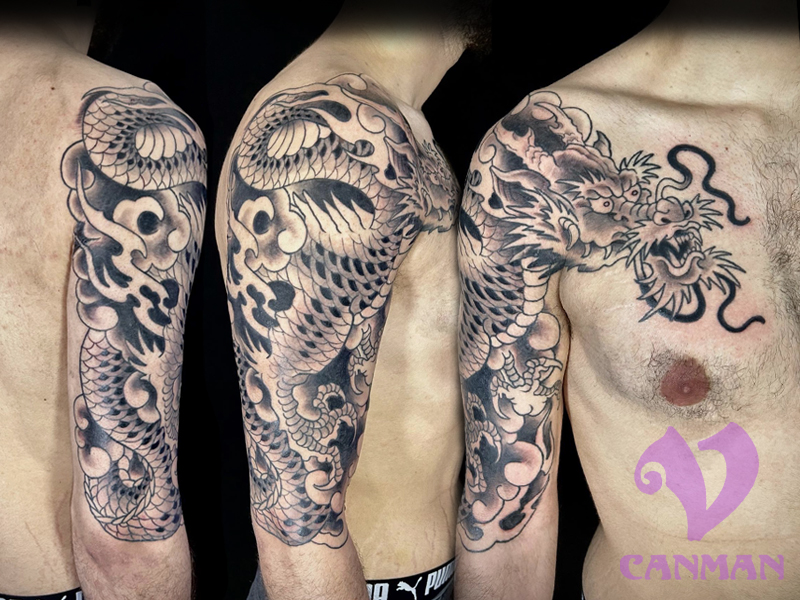This Japanese dragon was tattooed by Canman.
The client preferred Black & Grey done in a traditional style.
The design flows nicely from arm to chest.
Canman used a balance of value ranges so the tattoo is readable and will age well.
Interested in a dragon tattoo?
Go to our Tattoo Request Form to get your dragon tattoo project started!
About the Japanese dragon
Japanese dragons are creatures deeply rooted in Japanese mythology, folklore, and culture.
Dragons are often seen as benevolent and powerful entities associated with natural forces, water, and prosperity.
These dragons play a significant role in various aspects of Japanese society.
As a result, this includes art, literature, festivals, and religious beliefs.
Dragons are portrayed as long, serpentine creatures with varying numbers of claws on each limb.
They are often depicted with colorful scales and a bearded or whiskered face.
dragons are unique in that they lack wings, unlike the Western dragon depiction.
Japanese dragons are symbols of power, strength, and good fortune.
They are believed to have control over natural elements, including water, rain, and the seas.
Dragons are also associated with imperial power, and in ancient Japan, they were used as symbols of the emperor’s authority and legitimacy.
Dragon motifs can also be found on traditional clothing, such as kimonos, and various everyday objects.
Dragon dances and parades are common during festivals, especially at the New Year.
Therefore, symbolizing good luck and a prosperous year ahead.
Japanese dragons are often connected to various myths and stories.
One famous myth involves the sea god Ryūjin, who is depicted as a dragon, residing in a palace under the sea.
Another well-known legend is that of Susanoo, the storm god, slaying the eight-headed serpent, Yamata no Orochi, which is often interpreted as a dragon-like creature.
